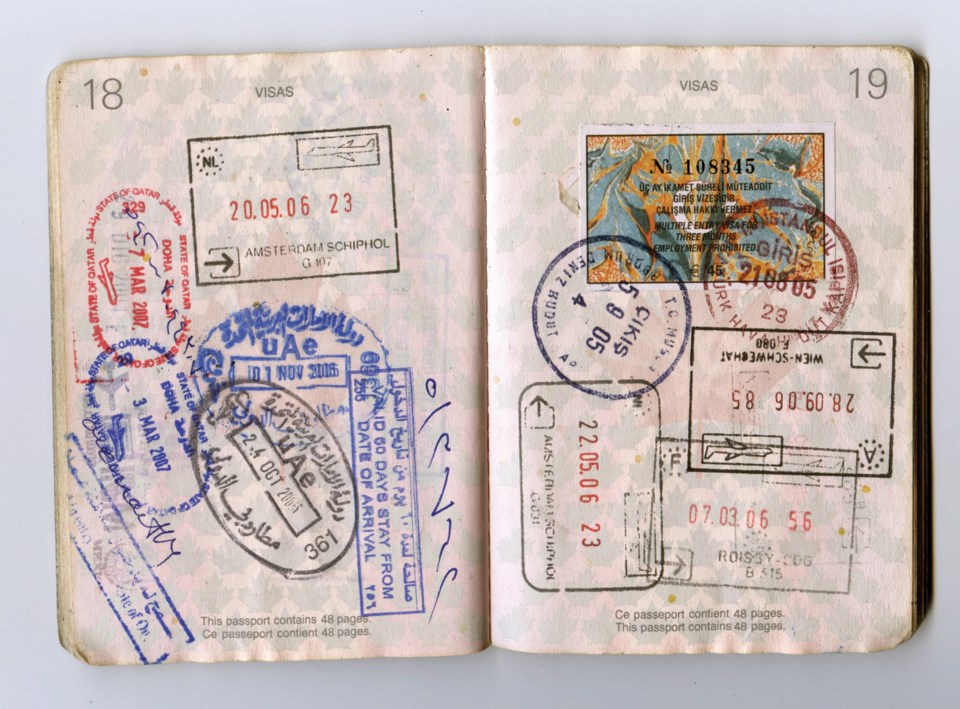Travelling to Europe for the first time can be very unnerving. I have therefore put forward some hints that I feel help can relieve doubts and stresses you may have.
Before you leave:
Tag all your cases with your initial and last name, email address and phone number prior to getting to the airport. If an airline needs additional information, they will look for a tag inside your suitcase. Inside your case add a tag that is easily visible and has your contact information and your destination address.
Maybe add a piece of bright ribbon to the handle to help you identify when picking up from the airport carousel.
Make sure your passports are current and travel documents are readily to hand. The name on your tickets must match the name in your passport.
Photo copy all documents, credit cards, passports etc. and be able to access them if needed. (You can always email them to yourself.)
When packing, make sure you do not have liquids over 100ml in your carry on luggage; customs security will make you dispose of these. If carrying a water bottle, leave empty and fill after going through security.
Commonly discarded are water bottles, but also sun-tan lotions, cosmetics and medicines. Pack them in your checked luggage if you want to keep them, as there are no exceptions when checking in with hand luggage.
Planning for your destination:
You may find it comfortable and less stressful to select a hotel or B&B as a base and explore the surrounding area. Cases can be left in your room while you enjoy your daily travels. This also saves you wasting valuable time searching for new accommodations each day.
We found that travelling one or two hours from our base accommodation was a comfortable journey, returning after a day of exploring and taking in the sites (approximately 200 km radius). The journey back can always be broken up by stopping for an evening meal.
Your base hotel/B&B can be changed if you wish to move to another area.
Changing locations:
Make sure you have plenty of time to travel to your next location. You will find it beneficial to have a printed log of your itinerary and have a full address of each location you will be staying.
Hotels and B&Bs can make or break your vacation experience. Always check other people’s experiences – good and bad – at your chosen accommodation. This can be done on their website, Trip Advisor or your choice of a booking website such as Expedia. You can also check the surrounding area of your accommodation by looking at aerial map views or street views. This can aid in familiarizing yourself with unknown locations, especially if you are driving, or locating the nearest public transport.
If you are using public transport, it is a good idea to estimate the travel time to and from your base and also take into consideration the timetable for travel. Check with public transportation websites, as these usually have a trip planner feature and timetables.
Car rental:
With European roads being very narrow and sometimes driving on the opposite side of the road, we suggest you get full insurance from the car rental. You can get collision, damage and waiver insurance from a Canadian agency, but in some countries, it may not be recognized. Rental companies require a $5,000 hold on your credit card if not purchasing full insurance from them.
Also be aware that if you do not purchase rental company insurance and you are unfortunate enough to have car damage, the rental company will bill your credit card for the repairs and loss of revenue the whole time the car is out of commission. It is then your responsibility to claim back from your Canadian insurance with all necessary bills and receipts.
France, England, Ireland:
In France, toilets are often coed. And in France, England and Ireland it’s not unusual to have to pay to use facilities. Busy city areas can charge as high as 1.50 Euro (C$2.25), valet included!
Always beware of scammers when approached with trinkets or sad stories. A simple ‘no thank you’ and keep walking works.
City pass allows you to attend many things, but be careful planning. Visiting museums with your pass are for consecutive days beginning with your first attendance, and this may not fit your plans on a city wide tour.
Palace of Versailles and the Louvre Museum, both well worth a visit, are 20 km apart and each will take approximately four to six hours to visit.
Currency exchange on credit cards:
It is best to leave charges in local currency. Your bank in Canada will charge you the current rate of the day. European stores make extra profit for the exchange rate they offer.
It is always good to have a small amount of cash available in the local currency in countries you may visit.
Quick check list before you leave:
1. Name and address in all cases
2. Be able to identify your case on airport carousel
3. Name on passport same as ticket reservations
4. No liquids over 100ml in carry-on luggage
5. Have destination address in your cases and in hand luggage
6. Photocopy all documents
Happy travels!



